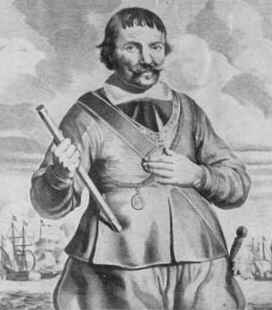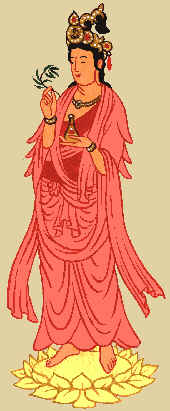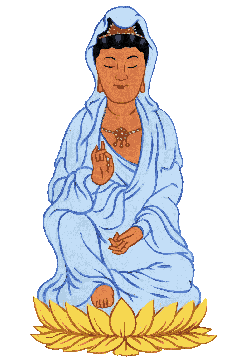 On a 24 March:
On a 24 March:
2000 Elián González and his cousin Marisleysis González are not smiling as they return home after learning that the US Attorney General is dead set on forcing the prompt return of Elián to Cuba. [photo >]
2000 Los quince países de la Unión Europea (Francia, Gran Bretaña, Italia, Bélgica, Nederlandia, Luxemburgo, España, Portugal, Alemania, Austria, Irlanda, Dinamarca, Suecia, Finlandia, Grecia), reunidos en Lisboa, aprueban un paquete de reformas entre las que se incluye las desregulación inmediata de las telecomunicaciones, lo que permitirá la expansión de Internet como instrumento para desarrollar la economía y crear empleo.
2000 US couple not guilty of letting python kill son. ^top^
A judge acquits a Carlyle, Illinois (about 80 km east of St. Louis. ) couple of charges filed against them after the family's pet python squeezed their 3-year-old son to death.
Judge Harold Pennock of the Clinton County Circuit Court issues a directed verdict of acquittal at the end of a weeklong trial, just before the case is to have gone to a jury.
He finds Robert and Melissa Altom not guilty of child endangerment, a charge that could have resulted in a 10-year prison sentence for the couple. To have made the charges stick, prosecutors had to show the couple acted willfully -- something the judge said had not been proven.
 The couple's 2.1-meter African rock python slithered out of its aquarium
in August 1999, killing the couple's son, Jesse, as he slept.
The couple's 2.1-meter African rock python slithered out of its aquarium
in August 1999, killing the couple's son, Jesse, as he slept. They should have read: When giant snakes such as pythons are kept as "pets" certain precautions must be taken. I strongly recommend the following two articles: Lenny Flank's article on handling large constrictors and the A.F.H. guidelines for keeping large constrictors. Mistakes do happen and the results can be fatal. Be careful and be informed.
[Should there be a Darwin Jr. award for people who remove their offspring from the gene pool?]
1999 NATO starts bombing Serbia to help relieve Kosovo ^top^
The assault includes air and sea-launched cruise missiles and bombing runs by American, German and French airplanes. It is the first time in NATO's 50-year existence that it has ever attacked a sovereign country.
For months, the Yugoslav government of dictatorial President Slobodan Milosevic had refused to sign a peace plan that would have ended officially sanctioned persecution of the ethnic Albanian majority in its province of Kosovo. The final straw came when Yugoslavia finally promised to sign, then backed off. Yugoslavia was clearly teasing the alliance, and possibly stalling to solidify its air defenses.
the North Atlantic Treaty Organization (NATO) commences air strikes against Yugoslavia with the bombing of Serbian military positions in the Yugoslav province of Kosovo. The NATO offensive came in response to a new wave of ethnic cleansing launched by Serbian forces against the Kosovar Albanians on March 20.
The Kosovo region was at the heart of the Serbian empire in the late Middle Ages but was lost to the Ottoman Turks in 1389 following Serbia's defeat in the Battle of Kosovo. By the time Serbia regained control of Kosovo from Turkey in 1913, there were few Serbs left in a region that had come to be dominated by ethnic Albanians. In 1918, Kosovo formally became a province of Serbia, and it continued as such after communist leader Josip Broz Tito established the Federal People's Republic of Yugoslavia in 1945, comprising the Balkan states of Serbia, Croatia, Bosnia-Herzegovina, Montenegro, Slovenia, and Macedonia. However, Tito eventually gave in to Kosovar demands for greater autonomy, and after 1974 Kosovo existed as independent state in all but name.
Serbs came to resent Kosovo's autonomy, which allowed it to act against Serbian interests, and in 1987 Slobodan Milosevic was elected leader of Serbia's Communist Party with a promise of restoring Serbian rule to Kosovo. In 1989, Milosevic became president of Serbia and moved quickly to suppress Kosovo, stripping its autonomy and in 1990 sending troops to disband its government. Meanwhile, Serbian nationalism led to the dissolution of the Yugoslav federation in 1991, and in 1992 the Balkan crisis deteriorated into civil war. A new Yugoslav state, consisting only of Serbia and the small state of Montenegro, was created, and Kosovo began four years of nonviolent resistance to Serbian rule.
The militant Kosovo Liberation Army (KLA) emerged in 1996 and began attacking Serbian police in Kosovo. With arms obtained in Albania, the KLA stepped up its attacks in 1997, prompting a major offensive by Serbian troops against the rebel-held Drenica region in February-March 1998. Dozens of civilians were killed, and enlistment in the KLA increased dramatically. In July, the KLA launched an offensive across Kosovo, seizing control of nearly half the province before being routed in a Serbian counteroffensive later that summer. The Serbian troops drove thousands of ethnic Albanians from their homes and were accused of massacring Kosovo civilians.
In October, NATO threatened Serbia with air strikes, and Milosevic agreed to allow the return of tens of thousands of refugees. Fighting soon resumed, however, and talks between Kosovar Albanians and Serbs in Rambouillet, France, in February 1999 ended in failure. On 18 March, further peace talks in Paris collapsed after the Serbian delegation refused to sign a deal calling for Kosovo autonomy and the deployment of NATO troops to enforce the agreement. Two days later, the Serbian army launched a new offensive in Kosovo. On 24 March, NATO air strikes began.
In addition to Serbian military positions, the NATO air campaign targeted Serbian government buildings and the country's infrastructure in an effort to destabilize the Milosevic regime. The bombing and continued Serbian offensives drove hundreds of thousands of Kosovar Albanians into neighboring Albania, Macedonia, and Montenegro. Many of these refugees were airlifted to safety in the United States and other NATO nations. On 10 June, the NATO bombardment ended when Serbia agreed to a peace agreement calling for the withdrawal of Serb forces from Kosovo and their replacement by NATO peacekeeping troops.
With the exception of two US pilots killed in a training mission in Albania, no NATO personnel lost their lives in the 78-day operation. There were some mishaps, however, such as miscalculated bombings that led to the deaths of Kosovar Albanian refugees, KLA members, and Serbian civilians. The most controversial incident was the May 7 bombing of the Chinese embassy in Belgrade, which killed three Chinese journalists and caused a diplomatic crisis in US-Chinese relations.
On 12 June, NATO forces moved into Kosovo from Macedonia. The same day, Russian troops arrived in the Kosovo capital of Pristina and forced NATO into agreeing to a joint occupation. Despite the presence of peacekeeping troops, the returning Kosovar Albanians retaliated against Kosovo's Serbian minority, forcing them to flee into Serbia. Under the NATO occupation, Kosovar autonomy was restored, but the province remained officially part of Serbia. Slobodan Milosevic was ousted from power by a popular revolution in Belgrade in October 2000. He was replaced by the popularly elected Vojislav Kostunica, a moderate Serbian nationalist who promised to reintegrate Serbia into Europe and the world after a decade of isolation.
1996 Hyakutake is the brightest comet to pass by the Earth in two decades.
1996 After two-years and $20 million, Intel abandons its plans to manufacture cable modems.
1996 Shannon Lucid enters Mir ^top^
US astronaut Shannon Lucid safely transfers to the Russian space station Mir from the US space shuttle Atlantis for a planned five-month stay. Lucid, a biochemist who shares Mir with Russian cosmonauts Yuri Onufriyenko and Yuri Usachev, conducts scientific experiments during her stay. She is the first female US astronaut to live in a space station. Beginning in August, her scheduled return to earth is delayed more than six weeks because of last-minute repairs to the booster rockets of the Atlantis and then by a hurricane. Finally, on September 26, 1996, she returns to earth aboard the Atlantis, touching down at Edwards Air Force Base in California. Her 188-day sojourn aboard Mir sets a new space endurance record for an American, and a world endurance record for a woman.
1995 The US House of Representatives passed a welfare reform package calling for the most profound changes in social programs since F. D. Roosevelt's New Deal. President Clinton criticized the bill, saying it was ''weak on work and tough on children.''
| 1994
Plan for recovery at IBM. ^top^
IBM chairman Lou Gerstner announces a turnaround strategy for the beleaguered company. Gerstner's plan involved reducing dependence on the mainframe business and increasing emphasis on client-server computing. Since 1993, when the company posted its first loss ever, IBM had suffered enormously. Gerstner's plan revitalized the company, bringing it back to profitability and strong stock prices. |
| 1989
The Exxon Valdez runs aground
^top^ The worst oil spill to ever occur in US territory begins after the supertanker Exxon Valdez, owned and operated by the Exxon Corporation, runs aground on a reef in Prince William Sound in southern Alaska. 43 million liters of petroleum spill into the water. Attempts to contain the massive spill are unsuccessful and wind and currents spread the oil over a hundred miles from its source, eventually affecting over seven hundred miles of coastline. It is estimated that as many as half-a-million birds and animals are severely injured or killed as a result of the environmental disaster. It is later revealed that Joseph J. Hazelwood, the captain of the Valdez, had been drinking at the time of the accident and had allowed an uncertified officer to steer the massive vessel. On 29 January 1990 Hazelwood would go on trial in Anchorage, Alaska, and in March 1990 be convicted of misdemeanor negligence, fined $50'000, and ordered to perform one thousand hours of community service. His captain’s license is subsequently suspended. Exxon itself is condemned by the National Transportation Safety Board, and, in early 1991, under pressure from environmental groups, the company agrees to pay a penalty of $100'000'000 and provide $1'000'000'000 over a ten-year period for the cost of the cleanup. However, later in the year, both Alaska and Exxon reject the agreement and, on 08 October 1991, Exxon settles the matter by paying an additional $25'000'000, less than 4% of the cleanup aid promised by the oil giant earlier in the year. Finally on 10 July 1992, an Alaska court overturns Hazelwood’s conviction, citing a federal statute that grants freedom from prosecution to those who report an oil spill. |
1988 Elecciones legislativas en Gibraltar, con gran afluencia de votantes, que dan el triunfo al dirigente laborista John Joseph “Joe” Bossano.
1988 Greenpeace pone de manifiesto el peligro de degradación de la Antártida, ante las deficiencias de las 60 bases científicas allí instaladas.
1986 US and Libya clash in Gulf of Sidra
1982 Five congregations in the eastern San Francisco Bay area became the first to declare themselves publicly as sanctuary churches, in an effort to help refugees from Central America establish themselves in the US during political and military unrest in their native countries.
| 1977
United States and Cuba engage in direct negotiations.
^top^ For the first time since severing diplomatic relations in 1961, Cuba and the United States enter into direct negotiations when the two nations discuss fishing rights. The talks marked a dramatic, but short-lived, change in relations between the two Cold War enemies. Fidel Castro had led Cuba farther away from the US orbit and closer to the Soviet bloc since coming to power in 1959. Throughout the 1960s, the United States and Cuba maintained hostility toward one another. By the mid-1970s, the deteriorating state of US-Latin America relations suggested that perhaps the time had come to ease tensions with Castro. Though the Cuban dictator was feared by many in Latin America, he was also a hero to many others for his success in remaining independent from the "colossus of the North"-the United States. When Carter took office in 1977, he indicated to Cuba that the United States was prepared to enter into direct diplomatic negotiations on a number of issues, including fishing rights. On 24 March 1977, negotiators from the United States and Cuba meet in New York City to discuss the fishing issue. It is the first time since 1961 that US and Cuban officials talk face to face on any issue. In the months that followed, other breakthroughs occurred. The two nations agreed to establish "interest sections" in the other's country that would operate as de facto embassies pending the restoration of full diplomatic relations. Castro freed some political prisoners and Carter eased travel restrictions to Cuba. These were encouraging signs, but many factors worked together to prevent any progress toward normalized relations. The strong and vocal Cuban-American community in the United States pressured congressmen and the president to back away from closer relations with Castro. Officials within Carter's administration cautioned the president about appearing too "soft" with the communist dictator. When Carter suffered a series of diplomatic setbacks in 1979, such as the fall of the pro-American leaders of Nicaragua and Iran, and the Soviet invasion of Afghanistan, he began to toughen his stance with Cuba. He criticized Cuba for its role in the Angolan civil war, and warned Castro about allowing Soviet troops into Cuba. Castro responded to these new attacks in a novel manner. In early 1980 he encouraged tens of thousand of Cubans, some from jails and asylums, to immigrate to the United States. Over 100'000 Cubans flooded into the United States, causing some serious problems, particularly in south Florida. By the end of 1980, US-Cuban relations were as acrimonious as ever. |
| 1975
North Vietnam orders final attack on Saigon.
^top^ The North Vietnamese "Ho Chi Minh Campaign" begins. Despite the 1973 Paris Peace Accords cease fire, the fighting had continued between South Vietnamese forces and the North Vietnamese troops in South Vietnam. In December 1974, the North Vietnamese launched a major attack against the lightly defended province of Phuoc Long, located north of Saigon along the Cambodian border. They successfully overran the provincial capital at Phuoc Binh on January 6, 1975. President Richard Nixon had repeatedly promised South Vietnamese President Nguyen Van Thieu that the United States would come to the aid of South Vietnam if the North Vietnamese committed a major violation of the Peace Accords. However, by the time the communists had taken Phuoc Long, Nixon had resigned from office and his successor, Gerald Ford, was unable to convince a hostile Congress to make good on Nixon's promises to Saigon. The North Vietnamese, emboldened by the situation, launched Campaign 275 in March 1975 to take the provincial capital of Ban Me Thuot in the Central Highlands. The South Vietnamese defenders fought very poorly and were quickly overwhelmed by the North Vietnamese attackers. Once again, the United States did nothing. President Thieu, however, ordered his forces in the Highlands to withdraw to more defensible positions to the south. What started out as a reasonably orderly withdrawal degenerated into a panic that spread throughout the South Vietnamese armed forces. They abandoned Pleiku and Kontum in the Highlands with very little fighting and the North Vietnamese pressed the attack from the west and north. In quick succession, Quang Tri, Hue, and Da Nang in the north fell to the communist onslaught. The North Vietnamese continued to attack south along the coast, defeating the South Vietnamese forces one at a time. As the North Vietnamese forces closed on the approaches to Saigon, the Politburo in Hanoi issued an order to Gen. Van Tien Dung to launch the "Ho Chi Minh Campaign," the final assault on Saigon itself. By April 27, the North Vietnamese had completely encircled Saigon and by April 30, the North Vietnamese tanks broke through the gates of the Presidential Palace in Saigon and the Vietnam War came to an end. |
1965 The first "teach-in" is conducted at the University of Michigan at Ann Arbor; two hundred faculty members participate by holding special anti-Vietnam-War seminars. Regular classes are canceled, and rallies and speeches dominate for 12 hours. On March 26, there would be a similar teach-in at Columbia University in New York City. Teach-ins would spread to many colleges and universities.
1964 Kennedy half-dollar issued
1959 Iraq withdraws from the Baghdad Pact
1949 El mariscal Vasilevski sucede a Nikolay Aleksandrovich Bulganin como ministro del ejército soviético.
1945 El Ejército Rojo inicia la ofensiva en dirección a Viena.
1945 Termina la primera fase del plan de operaciones dirigido por el general Dwight David Eisenhower.
1934 US President Franklin Roosevelt signs a bill granting future independence to the Philippines.
1933 Peter I Island incorporated as a Norwegian dependency
| 1931
The not-yet-Scottsboro
Boys get on a fateful Chattanooga choo-choo
^top^ |
1903 EE.UU. y el Reino Unido deciden formar una comisión mixta para fijar las fronteras de Alaska.
1903 Firma de un tratado entre Bolivia y Brasil que establece un modus vivendi respecto al litigio de Acre.
| 1900
Andrew Carnegie's Steel Trust
^top^ Andrew Carnegie disregards the all-but-impotent Sherman Anti-Trust Law and incorporates his Carnegie Steel Company. Much to the chagrin of trust-conscious legislators, the New Jersey-based behemoth towered above the rest of America's steel industry. Initially worth $160 million, Carnegie Steel earned $40 million in profits during its first year as a corporation. Though $25 million of that money went straight into Carnegie's pockets, the Scottish-born industrialist soon put his company on the selling block. In 1901, J.P. Morgan's freshly formed United States Steel Corporation, which again flew in the face of anti-trust laws, paid $250 million for Carnegie Steel. The deal made Carnegie the wealthiest man of the gilded age and prompted his retirement from the corporate sector. While Carnegie headed back to his native Scotland to pursue philanthropic endeavors, the giant US Steel Corporation dominated the steel field and burst into the record books as the first, but hardly last, US company to be worth over one billion dollars. |
1882 German scientist Robert Koch announces in Berlin that he has discovered the bacillus responsible for tuberculosis.
1875 En el transcurso de las Guerras carlistas, Alfonso XII se pone al frente del Ejército del Norte.
1863 Union Steele's Bayou, Mississippi amphibious expedition skirmishes with Confederates at Deer Creek
1862 Riot at abolition meeting in Cincinnati, Ohio
1832 Mormon Joseph Smith beaten, tarred and feathered in Ohio.
1814 Fernando VII entra en España para hacerse cargo del Gobierno tras la Guerra de la Independencia española.
1813 Le pape Pie VII se rétracte du semblant de concordat en onze articles, que Napoléon lui a fait signer le 25 janvier 1813 à Fontainebleau. Dès le lendemain, en manière de riposte, Napoléon nomme douze évêques.
1808 Fernando VII es acogido con entusiasmo como nuevo monarca por el pueblo de Madrid, puesto que con él acababa el gobierno de Manuel de Godoy y Alvarez de Faria (una sola persona con demasiados apellidos).
1794 LASCOMBES Françoise, domiciliée à Toulouse, département de la Haute Garonne, condamnée à mort le 4 germinal an 2, par le tribunal criminel dudit département comme émigrée.
1794 LATREILLE Marie Anne Catherine, femme Guetineau, âgée de 34 ans, née à Montreuil-Bellay, près de Saumur, domiciliée à Paris, département de la Seine, condamnée à mort le 4 germinal an 2, par le tribunal révolutionnaire de Paris, comme complice de la conspiration d'Hébert, Vincent, Ronsin et Autres, tendante à dissoudre la convention nationale, à assassiner ses membres et les patriotes et détruire le gouvernement Républicain.
1794 LAUMIER Michel, général de brigade, ci-devant, lieutenant colonel de la marine, âgé de 63 ans, né et domicilié à Paris, département de la Seine, condamné à mort, le 4 germinal an 2, par le tribunal révolutionnaire de Paris, comme complice d'une conspiration contre la liberté et la sûreté du Peuple français, tendante à Troubler l'état par une guerre civile, en armant les citoyens les uns contre les autres et contre l'exercice de l'autorité légitime, par suite de laquelle des conjurés devaient dissoudre la Représentation nationale, assassiner ses membres et les patriotes, détruire le gouvernement républicain, s'emparer de la souveraineté du peuple, et donner un tyran à l'état.
1765 Britain enacts the Quartering Act, requiring American colonists to provide temporary housing to British soldiers.
| 1644
Rhode Island colony established
^top^ In London, Roger Williams, an important American religious leader and the founder of the Providence settlement, is awarded a royal charter by Parliament to formally establish the Rhode Island Colony. In 1631, Williams arrived at Boston in the Massachusetts Bay Colony from England. Williams, a Puritan, worked as a teacher before serving briefly as a colorful pastor at Plymouth and then at Salem. However, within a few years of his arrival, he alarmed the Puritan oligarchy of Massachusetts by speaking out against the right of civil authorities to hand out punishment for religious offenses and opposing the practice of doling out land that belonged to Indians. In October 1635, he was banished from the Massachusetts Bay Colony by the General Court. After leaving Massachusetts, Williams, with the assistance of the Narragansett Native American tribe, established a settlement at the junction of two rivers near Narragansett Bay, located within present-day Rhode Island. Williams declared the settlement open to those seeking freedom of conscience and the removal of the church from civil matters. Taking the success of the venture as a sign from God, Williams named the first community in history boasting complete religious freedom Providence. Among those who found a haven in the religious and political refuge of the settlement were Anne Hutchinson, who was exiled from Massachusetts for theological reasons, some of the first Jews to settle in North America, and the Quakers. In 1643, Williams traveled back to England to win a formal colonial charter that would help Rhode Island secure a legal position from which to fight against hostile New England colonies. Parliament grants the charter on 24 March 1644, praising Rhode Island’s spirit of religious tolerance. Roger Williams also founded the first Baptist church in America and edited the first dictionary of Native American languages. |
 1998
1998 About 100 yds. from the wall of Westside Middle School's gym is
Cole Hill, an elevation surrounded by gravel and blacktop roads.
It was near here that Mitch and Drew found a site to park the van.
They had a clear view of the school's playground, enclosed by chain-link
fence, a hundred meters or so up the road. Meter-high sage grass,
kudzu vines and an array of sapling oaks, sweet gums and acorn trees
provided cover. For Mitch and Drew, the spot was perfect.
About 100 yds. from the wall of Westside Middle School's gym is
Cole Hill, an elevation surrounded by gravel and blacktop roads.
It was near here that Mitch and Drew found a site to park the van.
They had a clear view of the school's playground, enclosed by chain-link
fence, a hundred meters or so up the road. Meter-high sage grass,
kudzu vines and an array of sapling oaks, sweet gums and acorn trees
provided cover. For Mitch and Drew, the spot was perfect.  The next day, Drew remained silent throughout the
preliminary hearing, even as he listened to the recitation of his
and Mitchell's crimes: five counts of capital murder, 10 counts
of first-degree battery [not to speak of truancy, burglary,
vehicle theft, driving without a license, trespassing, illegal parking,
and causing a false fire alarm]. Mitch wept and appeared remorseful.
But a single night of jail found the boys outwardly changed. Upon
waking, Mitchell requested a Bible, a minister and "some Scripture
thought," according to Sheriff Dale Haas. Both boys asked for pizza
for lunch. The request was denied, and Drew began to cry in his
holding cell, begging for his mother. Said the sheriff: "He wants
his Mama, and he wants to go home now."
The next day, Drew remained silent throughout the
preliminary hearing, even as he listened to the recitation of his
and Mitchell's crimes: five counts of capital murder, 10 counts
of first-degree battery [not to speak of truancy, burglary,
vehicle theft, driving without a license, trespassing, illegal parking,
and causing a false fire alarm]. Mitch wept and appeared remorseful.
But a single night of jail found the boys outwardly changed. Upon
waking, Mitchell requested a Bible, a minister and "some Scripture
thought," according to Sheriff Dale Haas. Both boys asked for pizza
for lunch. The request was denied, and Drew began to cry in his
holding cell, begging for his mother. Said the sheriff: "He wants
his Mama, and he wants to go home now."  Mitchell Johnson, 13, found God at a Baptist youth
revival meeting in September 1997. He made a profession of faith
and decided to accept Jesus Christ as his savior. Mitchell had been
in Jonesboro barely two years, and looking to fit in. A classmate
brought him to Central Baptist, and the church, for a while at least,
seemed to provide a haven. He became an upstanding member of the
congregation, delighting many of the adults with his choirboy gentility.
"Yes, sir" was the way he addressed the men, and he was wont to
say "Ma'am" when he held out a chair for a lady. He'd been raised
right, most folks thought. Only two weeks before the shooting, Mitchell
Johnson joined up with another youth group to sing and minister
at a nursing home.
Mitchell Johnson, 13, found God at a Baptist youth
revival meeting in September 1997. He made a profession of faith
and decided to accept Jesus Christ as his savior. Mitchell had been
in Jonesboro barely two years, and looking to fit in. A classmate
brought him to Central Baptist, and the church, for a while at least,
seemed to provide a haven. He became an upstanding member of the
congregation, delighting many of the adults with his choirboy gentility.
"Yes, sir" was the way he addressed the men, and he was wont to
say "Ma'am" when he held out a chair for a lady. He'd been raised
right, most folks thought. Only two weeks before the shooting, Mitchell
Johnson joined up with another youth group to sing and minister
at a nursing home.  Of
the gun lovers at Westside, few were as proficient and prominent
as Andrew Golden. Despite his tender age, he had
a reputation among his classmates for being "mean-spirited." Even
though he was only 11 years old, Drew seemed to embody a toughness
that Mitchell was looking for. On Royale Drive, where Golden's parents
lived in a one-story stone bungalow, neighbors had reluctantly grown
used to the sight of Drew biking in military fatigues. "He was always
wearing camo clothing and talking about hunting and shooting targets,"
said neighbor Debbie Wilson. Hunting gear isn't uncommon in Jonesboro,
but some parents were nevertheless wary of Drew, who was known to
horse around with a hunting knife strapped to his side. "I didn't
allow my Jenna to play with him," said neighbor Lloyd Brooks. "He
was too rowdy."
Of
the gun lovers at Westside, few were as proficient and prominent
as Andrew Golden. Despite his tender age, he had
a reputation among his classmates for being "mean-spirited." Even
though he was only 11 years old, Drew seemed to embody a toughness
that Mitchell was looking for. On Royale Drive, where Golden's parents
lived in a one-story stone bungalow, neighbors had reluctantly grown
used to the sight of Drew biking in military fatigues. "He was always
wearing camo clothing and talking about hunting and shooting targets,"
said neighbor Debbie Wilson. Hunting gear isn't uncommon in Jonesboro,
but some parents were nevertheless wary of Drew, who was known to
horse around with a hunting knife strapped to his side. "I didn't
allow my Jenna to play with him," said neighbor Lloyd Brooks. "He
was too rowdy." 



 The twelfth-century legend of the Buddhist saint
Miao Shan, the Chinese princess who lived in about 700 B.C. and is widely
believed to have been Kuan Yin, reinforced the image of the bodhisattva
as a female. During the twelfth century Buddhist monks settled on P'u-t'o
Shan--the sacred island-mountain in the Chusan Archipelago off the coast
of Chekiang where Miao Shan is said to have lived for nine years, healing
and saving sailors from shipwreck--and devotion to Kuan Yin spread throughout
northern China.
The twelfth-century legend of the Buddhist saint
Miao Shan, the Chinese princess who lived in about 700 B.C. and is widely
believed to have been Kuan Yin, reinforced the image of the bodhisattva
as a female. During the twelfth century Buddhist monks settled on P'u-t'o
Shan--the sacred island-mountain in the Chusan Archipelago off the coast
of Chekiang where Miao Shan is said to have lived for nine years, healing
and saving sailors from shipwreck--and devotion to Kuan Yin spread throughout
northern China. 
 Today Kuan Yin is worshipped by Taoists as well
as Mahayana Buddhists--especially in Taiwan, Japan, Korea and once again
in her homeland of China, where the practice of Buddhism had been suppressed
by the Communists during the Cultural Revolution (1966-69). She is the protectress
of women, sailors, merchants, craftsmen, and those under criminal prosecution,
and is invoked particularly by those desiring progeny. Beloved as a mother
figure and divine mediatrix who is very close to the daily affairs of her
devotees, Kuan Yin's role as Buddhist Madonna has been compared to that
of Mary the mother of Jesus in the West.
Today Kuan Yin is worshipped by Taoists as well
as Mahayana Buddhists--especially in Taiwan, Japan, Korea and once again
in her homeland of China, where the practice of Buddhism had been suppressed
by the Communists during the Cultural Revolution (1966-69). She is the protectress
of women, sailors, merchants, craftsmen, and those under criminal prosecution,
and is invoked particularly by those desiring progeny. Beloved as a mother
figure and divine mediatrix who is very close to the daily affairs of her
devotees, Kuan Yin's role as Buddhist Madonna has been compared to that
of Mary the mother of Jesus in the West.